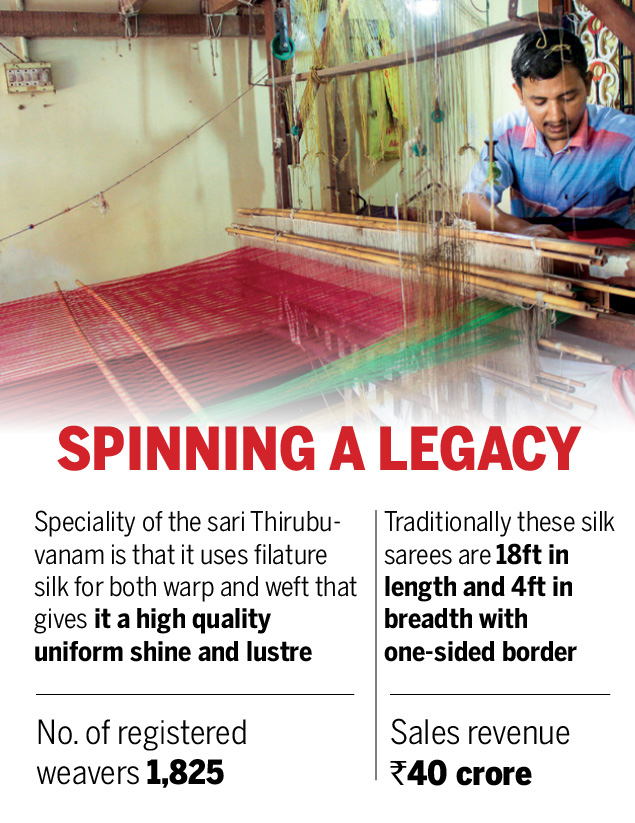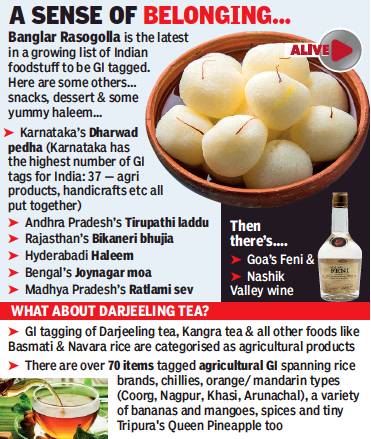Geographical Indication and India
This is a collection of articles archived for the excellence of their content. |
Contents |
Geographical indication
Mamtha Asokan, Aparna Desikan and D Vincent Arockiaraj, July 24, 2020: The Times of India
Geographical indication (GI) tag is a sign used on products that have a specific geographical origin and possess qualities or a reputation that are due to that origin. In order to function as a GI, a sign must identify a product as originating in a given place. In addition, the qualities, characteristics or reputation of the product should be essentially due to the place of origin. Since the qualities depend on the geographical place of production, there is a clear link between the product and its original place of production.
Business
As in Jan 2020

From: Mamtha Asokan, Aparna Desikan and D Vincent Arockiaraj, July 24, 2020: The Times of India

From: Mamtha Asokan, Aparna Desikan and D Vincent Arockiaraj, July 24, 2020: The Times of India
The main period of business, the marriage season begins from Sankranti (January 15) and lasts till the beginning of Aadi (July 15).
The wedding budget of garments [till Dec 2019 was] ₹1 lakh per family. “People [would] buy the wedding sari for the bride, ‘samandhi’ (gifted to the in-laws) saris and veshti/dhoti for the groom. The traditional practice of gifting saris for weddings [was] there.,” says Chetty.
With rising gold and silver prices, silk sari manufacturers are now adopting new strategies such as reducing the size of the sari border from four inches to two or 1.5 inches. Others like Prakash Sah, owner of Kancheepuram-based Prakash Silks, keeps employees busy by making synthetic zari instead of silver. “One needs to sell silverbased zari within 2-3 months of making the saree. That seems impossible at this point and we are changing our strategy,” he says.
One needs to sell silver-based zari within 2-3 months of making the saree.
The shelf-life of a silk sari is five years, and needs to be refolded every week for better longevity. The rate of pure silk stands at ₹4,000/kg and is sourced from Bengaluru and this rate could go up if silk import from China gets banned
Prasad Pannerselvam of P S Silk Sarees, employs 169 weavers
Handloom weaver K Krishnamurthy of Kancheepuram said a weaver gets wages between Rs 15,000 and Rs 25,000 depending on the orders every month.
On an average, weavers make more than one lakh handloom silk sarees every year. These are bought by tourists and marriage shoppers who throng Kancheepuram.
The silk saris created by the weavers in the temple town of Thirubuvanam near Kumbakonam in Thanjavur district are famous for the rich zari work and fine silk.
In March 2019, the unique weaving technique of the region that uses filature silk for warp and weft that results in superior quality fabric, got the GI tag. Adorned with pure zari work, the ‘pallu’ of the sari is continuously woven on the loom and runs on from the body, unlike other saris where the body and ‘pallu’ are woven separately.
But before the GI recognition could guarantee it the prized status, the economy [was] hit.
N D Nagendran, district president of AITUC for weavers’ wing said, “Every year the society does business to the tune of ₹40 crore.
The weaving tradition is tied to the Sourashtra community, who were known for their handloom saris and had settled down in Thirubuvanam during the period of Nayaks and Marathas. More than 1,500 families are engaged in making the handloom sari, for ₹3,000 to ₹6,000 per piece, under the Thirubuvanam Silk Handloom Weavers
Cooperative society that distributes raw material to the weavers. [Before Covid], raw material to make up to 50 saris per month used to be distributed
As gold-coated silver zari is used for weaving, the skyrocketing of gold rates is further adding to production woes.
Products, in brief

From: November 15, 2017: The Times of India
See graphic:
Geographical Indication (GI) tag, some important items to be tagged, as in November 2017